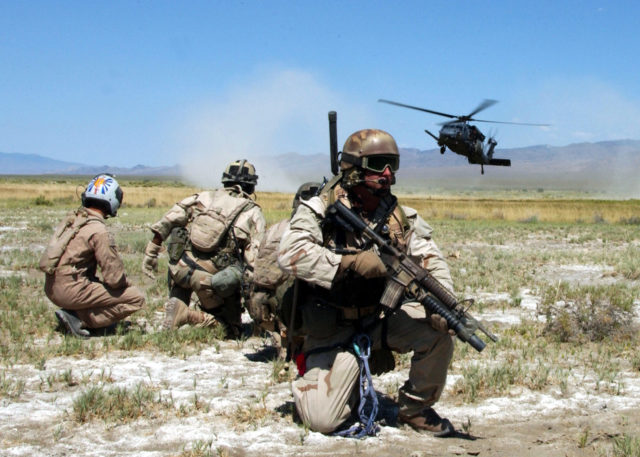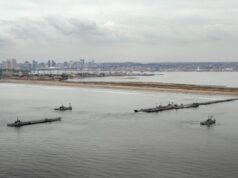
All strategic planning is based on a set of assumptions. Surprise occurs when core assumptions are proven wrong.
History is replete with examples of militaries that failed due to their inability to transform organizations and culture, adopt new operational concepts, or leverage breakthrough technologies. But militaries do not fail by themselves. Failure occurs in the context of an overall national debacle caused by systemic problems that fall into three distinct but related categories:
• Failure to Anticipate the nature of and trends within the strategic environment; the character and resilience of the opponent; one’s own will and resolve; the impact of technology – be it new or old but used in new ways; and, perhaps most importantly, failure to anticipate the second- and third-order consequences of both action and inaction.
• Failure to Learn from experience – both our own and others’. Selective reading of history – especially when coupled with faulty analysis – is particularly pernicious here, as is mistaking “lessons recorded” with lessons absorbed and actually learned.
• Failure to Adapt behaviors, concepts and institutional constructs to the ever-changing domestic and international dynamics; evolving adversarial operational, tactical, technological, and/or doctrinal innovations. Failure to validate pivotal assumptions and adjust accordingly falls in this category as well.
History is replete with examples of disasters born of lack of strategic foresight: The American Army after the Civil War – arguably the most experienced on the planet – spent 30 years fighting the Indians only to struggle to deploy a brigade 80 miles off the coast of Florida – against Spain in Cuba. Likewise, Britain and France post-1815 let their conventional power fade – while their hubris blossomed – resulting in a blood bath in the Crimean War and near-existential disasters in the two World Wars that followed. In the wake of their spectacular victory in June 1967, the Israel Defense Forces (IDF) rested on its laurels, ceased innovating, and focused on policing the newly acquired territories and fighting terrorism, secure in the soon-to-be-proven fallacy that past successes and strategic depth would deter any future conventional threat. Six short years later, in October 1973, Israel was fighting for its very survival, having fallen victim to strategic surprise masterfully orchestrated by the seemingly defeated foe.
The implications are clear: First, aggressors tend to assume risks that seem irrational – and, thus, improbable – to the intended victim. This leads to strategic dislocation – and, potentially, catastrophic failure. Second, reputation and credibility born of past successes might not suffice as a deterrent. Third, reneging on commitments undermines credibility, potentially causing long-term damage to global stature and influence. Specifically, for a great power like the United States, there is no such thing as “minor setback.” Anything less than a resounding success – perceived as such by friend and foe alike – will be magnified in the interconnected global village and feed the narrative of America as “the giant with feet of clay.”
We must balance current exigencies with future requirements. Any single-focus approach bears a huge opportunity cost. The rest of the world has not taken a time out while we tended to Iraq and Afghanistan. To the contrary, it exploited our focus on the lower end of the conflict spectrum to the point of leapfrogging areas where the United States effectively took its dominance for granted. Consequently, future conflicts will be more costly, violent, and difficult to control. The potential for strategic surprise is high, and our military’s residual capacity is at a historic low. Concepts and institutional structures, valid for a specific time and place, should not be allowed to become dogma. That too is a prescription for failure.
A compelling description of what failure might look like is as important as a crisp articulation of the desired end-state. The latter describes how we WANT the situation to be after the mission is accomplished. The former lays out the UNDESIRABLE alternative – the consequences of a mission left undone. Yet, imagining failure is simply not in our DNA. Indeed, it isn’t in ANY nation’s DNA. Consider the following truism: the only certain thing about war is that one side will lose. Yet, since time immemorial, nations and armed groups have gone to war with nothing but a picture of victory imprinted in their minds – secure in the belief that God and justice were on their side. Saying that “failure is not an option” is, thus, nothing but an exhortation. In truth, failure is an ever-present – though obviously adverse—possibility.
Debacles-in-the-making develop over time, usually with plenty of opportunities to notice and correct the downward spiral. What prevents that course correction are systemic deficiencies, wishful thinking, as well as the inherent human ability to adjust to a “new normal” – the shifting baseline of what is deemed acceptable.
At its core, the inability to conceive anything but a resounding success is a failure of the imagination. It is also a natural defense mechanism. Humans tend to repress or explain away the ever-present potential for failure. Bad experiences are particularly tempting to forget. Yet imagining what failure might look like is a necessary step in laying out the foundation for success.
For a nation whose security is predicated on an enduring strategy of dissuasion and deterrence, the most fundamental risk is failure of deterrence. Deterrence is a function of capability, will, and credibility and, thus, exists in the eye of the beholder. Its success – or failure – is measured only in the breech. We also need to evolve new deterrence concepts. In particular, it behooves us to rethink concepts such as extended deterrence and conceive new ways to deal with asymmetric actors who might have been deemed “undeterrable” in the Cold War construct.
Strategic risk can also mount through the accumulation of shortfalls in recapitalization and modernization, stale strategic concepts, failure to revitalize organizational ethos, and unwillingness to let go of outdated structures, bureaucratic arrangements, sector boundaries, and hierarchical relationships. America’s global posture and future success depend upon the ability of our people and organizations to adopt new, relevant concepts, constructs and technologies, suitable to the dynamics of the strategic environment.
The United States is at an historic inflection point demanding an equally comprehensive revolution. The future strategic environment will be shaped by the interaction of globalization, economic disparities and competition for resources; diffusion of technology and information networks whose very nature allows unprecedented ability to harm and, potentially, paralyze advanced nations; and systemic upheavals impacting state and non-state actors and, thereby, international institutions and the world order. The following are salient features of this increasingly complex, dynamic, lethal, and uncertain environment:
• Rising peer competitors with voracious appetites for resources and influence;
• Predatory and unpredictable regional actors;
• Violent extremism and ethnic strife – a global, generational, ideological struggle;
• Proliferation of weapons of mass destruction and empowering technologies;
• Increasing lethality and risk of intrusion by terrorist and criminal organizations;
• Systemic instability in key regions (political, economic, social, ideological);
• Unprecedented velocity of technological change and military adaptation;
• Availability of advanced weapons in a burgeoning global marketplace;
• Exponential growth in volume, exchange, and access to information;
• Greatly reduced ability to retain high-level national security secrets;
• Extremely rapid decay rates for any domain advantage;
• Surging globalization, interconnectivity and competition for scarce resources; and
• Dislocating climate, environmental, and demographic trends.
These global dynamics are closely intertwined with the changing character of 21st century warfare. Having experienced – or vicariously learned – the cost of challenging the United States head-on, would-be adversaries are developing asymmetric approaches to attack vital levers of U.S. power. Their strategies seek to circumvent our core advantages, while undermining international support and domestic resolve.
Our military’s unprecedented lethality and effectiveness deter opponents from massing on the battlefield, driving them to adopt distributed and dispersed operations. They find maneuver space and sanctuary in dense urban areas, ungoverned hinterlands and loosely regulated information and social networks.
Meanwhile, ascendant powers are posturing to contest U.S. superiority, translating lessons from recent conflicts into new concepts, capabilities and doctrines tailored to counter U.S. strengths and exploit vulnerabilities. Specifically:
• Anti-access/Area-denial weapons and operational concepts designed to limit our freedom of action and power projection capability;
• “Generation 4-plus” aircraft that challenge America’s existing inventory and, potentially, air superiority;
• Increasingly lethal, integrated air defense systems (IADS) that could negate weapons and tactics used to suppress or destroy these systems;
• Proliferation of surface-to-surface missiles with growing range, precision, mobility, and maneuverability—capable of delivering both conventional and non-conventional payloads;
• Proliferation of unmanned aerial systems (UAS) capable of conducting low observable, persistent, intrusive missions in both lethal and non-lethal modes;
• Resurgence of offensive counter-space capabilities;
• Increasing ability of even marginal actors to observe the disposition of U.S. assets through widely-available, inexpensive commercial means; and
• Attacks through cyberspace are creating tactical, operational and strategic effects at low cost and with relative impunity.
Consequently, the United States and its allies face an unprecedentedly varied array of threats, ranging from existential to potentially crippling perils.
Existential Threats
Existential threats are risks to America’s way of life as a Western, democratic society with a functioning economy, governance, public services and infrastructure. While most existential threats occur suddenly, an overwhelming migration of alien culture beyond our ability to absorb and socialize to our way of life could cause an existential threat over time.
Such existential threats to our way of life must be distinguished from crippling threats which severely affect either a segment of society, a geographic region, or an isolated portion of the country’s infrastructure. A crippling threat is recoverable, although the recovery could be long and painful. A synchronized series of crippling threats could become existential, if we fail to regain decision superiority, respond properly and break the chain of cascading effects.
Even if we continue successfully to dissuade and deter major competitors, their advanced equipment is proliferating worldwide. We are bound to confront these systems wherever America engages to promote and defend its interests. We must also be vigilant for adversary breakthroughs in fields such as cybernetics, nanotechnology, biotechnology, electromagnetic spectrum physics, robotics, advanced propulsion, etc. We cannot assume that the next military revolution will originate in the West. Therefore, we must anticipate innovative combinations of traditional and new concepts, doctrines, weapons systems, and disruptive technologies.
At a Strategic Crossroads
As a consequence of these global dynamics, we are at a strategic crossroads. From this point forward, the United States should expect to be asymmetrically challenged in ALL domains. Perhaps for the first time in history, the ability to inflict damage and cause strategic dislocation is no longer directly proportional to capital investment, superior motivation and training, or technological prowess. Asymmetry is the order of the day. And, all too often, America finds itself on the wrong side of the cost-imposition curve.
Our non-negotiable commitment is to provide forces proficient across the full range of military operations to protect the United States, its interests, values and allies; deter conflict and prevent surprise; and, should deterrence fail, prevail against any adversary. We must enhance our own asymmetric advantage by delivering global surveillance, global command and control, and the requisite speed, range, precision, persistence, and payload to strike any target, anywhere, anytime, in and through any domain. Joint and Combined Force Commanders must retain the ability to safeguard the homeland, assure allies, dissuade opponents, and inflict strategic dislocation and paralysis on adversaries.
America’s strategic partnerships are more important than ever. We must strengthen and broaden coalitions, attending to interoperability between allies and partners. Building these relationships is both an engine of progress and prosperity, as well as a potent instrument of America’s diplomacy in an increasingly interconnected world.
We must formulate innovative concepts to anticipate, adapt to, and overcome symmetric and asymmetric challenges. We must also accelerate the deployment of evolutionary and disruptive technologies, as we address the urgent need to recapitalize and modernize.
Our shared touchstone of the noble virtues enshrined in the Constitution and a single, unifying purpose “to provide for the common defense” must remain unchanged. We will have neither the buffer of time nor the barrier of oceans in future conflicts. The character, tempo and velocity of modern warfare already severely test our ability to adapt. Therefore, redefining the interagency and the private-public relationship is an urgent national security requirement – not a luxury we can defer. Rising to this challenge is not a choice: It is our shared responsibility and a national imperative.
Lani Kass, Ph.D., is Senior Vice President and Corporate Strategic Advisor for CACI International Inc. and served as Senior Policy Advisor to the Chairman of the Joint Chiefs of Staff.





